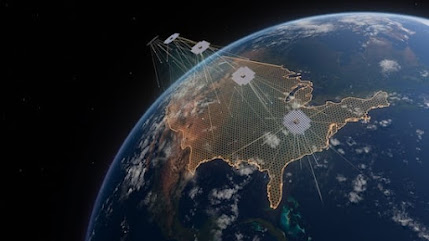The Indian Space Research Organisation (ISRO) is set to make history by launching an American communications satellite. This is the first time an American company is using an Indian rocket for such a large and advanced satellite. The mission is expected to occur in February or March 2025.
Background of the Mission
Historically, ISRO has focused on launching small satellites from American manufacturers. The upcoming launch will be the first instance of a massive communications satellite being deployed by a US company from Indian soil. This initiative reflects the growing partnership between India and the United States in the field of space technology.
The Role of AST SpaceMobile
AST SpaceMobile, a Texas-based company, is expected to be the manufacturer of the satellite. The company has developed technology that allows users to make voice calls using standard smartphones. Unlike other satellite communication providers, AST SpaceMobile does not require users to purchase special handsets or terminals, making it more accessible to the general public.
Technical Specifications of the Satellite
This satellite aims to revolutionise mobile communication by enabling direct voice calls from space. It eliminates the need for special setups, unlike other systems like Starlink. Users will benefit from enhanced connectivity, especially in remote areas where traditional mobile networks may be unreliable. The technology promises to bridge the communication gap and provide broadband internet access globally. It aims to make 5G broadband affordable and accessible in underserved and remote areas. It will support critical services such as education, healthcare, social networking, and promote economic opportunities.
Key Facts About
GSLV Mk II:
Technical Specifications of the Satellite
- The satellite in question is the Bluebird satellite, which will be launched into low Earth orbit using ISRO’s Geo-synchronous Satellite Launch Vehicle (GSLV).
- It will feature a large 64 square-meter antenna, approximately half the size of a football field.
- The satellite is projected to weigh around 6,000 kg, showcasing its capability to handle substantial data transmission.
This satellite aims to revolutionise mobile communication by enabling direct voice calls from space. It eliminates the need for special setups, unlike other systems like Starlink. Users will benefit from enhanced connectivity, especially in remote areas where traditional mobile networks may be unreliable. The technology promises to bridge the communication gap and provide broadband internet access globally. It aims to make 5G broadband affordable and accessible in underserved and remote areas. It will support critical services such as education, healthcare, social networking, and promote economic opportunities.
Key Facts About
- GSLVGeosynchronous Satellite Launch Vehicle is designed to place communication satellites into Geostationary Transfer Orbit (GTO) using a cryogenic third stage for higher thrust.
- Significance: GSLV is a medium-lift launch vehicle and marks India’s move toward self-reliance in launching heavy satellites for communication, meteorology, and strategic purposes.
- It played a key role in major missions like Chandrayaan-2.
- 1990: ISRO began developing GSLV to achieve sovereign satellite launch capability.
- 2000: First experimental flight carrying GSAT-1 failed due to cryogenic stage limitations.
- 2014: First successful flight with an indigenous cryogenic upper stage launched GSAT-14 (GSLV-D5).
- Since 2017: Achieved 6 consecutive successful flights, establishing reliability.
GSLV Mk I:
- Used Russian cryogenic upper stage due to early challenges in developing indigenous technology.
- Payload capacity: 2–2.5 tons to GTO.
- Operated from 2001–2010 with 5 flights.
GSLV Mk II:
- Features indigenous cryogenic engine.
- Payload capacity: 2.5 tons to GTO.
- First successful launch: 2014 (GSAT-14).
- Most advanced variant with a payload capacity of 4 tons to GTO.
- Used for significant missions like Chandrayaan-2 and future human spaceflight missions.
Uses Liquid Hydrogen (LH2) and Liquid Oxygen (LOX) for greater thrust.
Enables heavier payloads in higher orbits, vital for communication satellites.
Website Link : popularengineer.org
Nomination Link https://popularengineer.org/award-nomination/?ecategory=Awards&rcategory=Awardee
Contact Info : contact@popularengineer.org
#ISRO
#BluebirdSatellite
#ISROLaunch
#SatelliteLaunch
#ISROMission
#SpaceExploration
#SatelliteTech
#BluebirdUS
#IndianSpaceAgency
#SpaceInnovation
Enables heavier payloads in higher orbits, vital for communication satellites.
Website Link : popularengineer.org
Nomination Link https://popularengineer.org/award-nomination/?ecategory=Awards&rcategory=Awardee
Contact Info : contact@popularengineer.org
#ISRO
#BluebirdSatellite
#ISROLaunch
#SatelliteLaunch
#ISROMission
#SpaceExploration
#SatelliteTech
#BluebirdUS
#IndianSpaceAgency
#SpaceInnovation

No comments:
Post a Comment